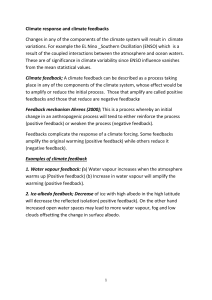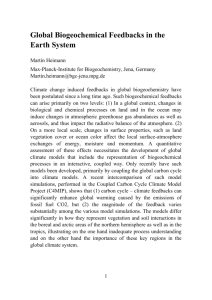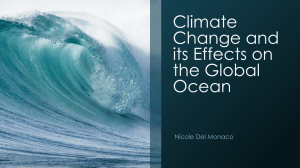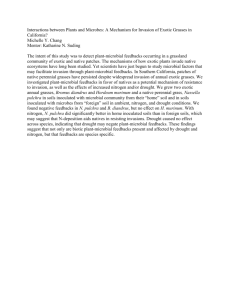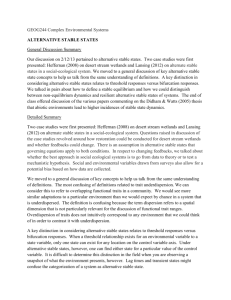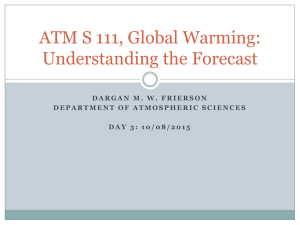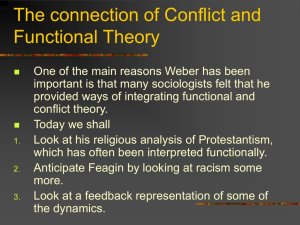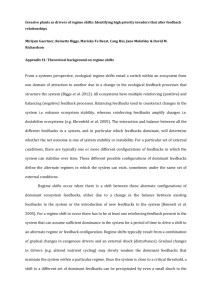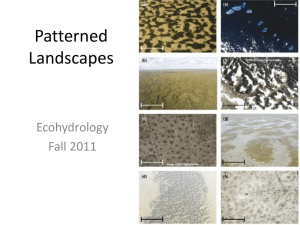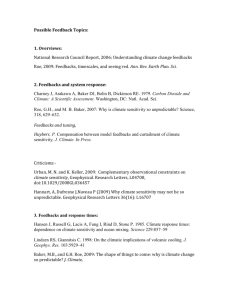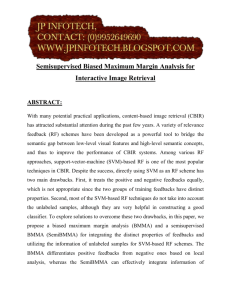Lecture_6
advertisement
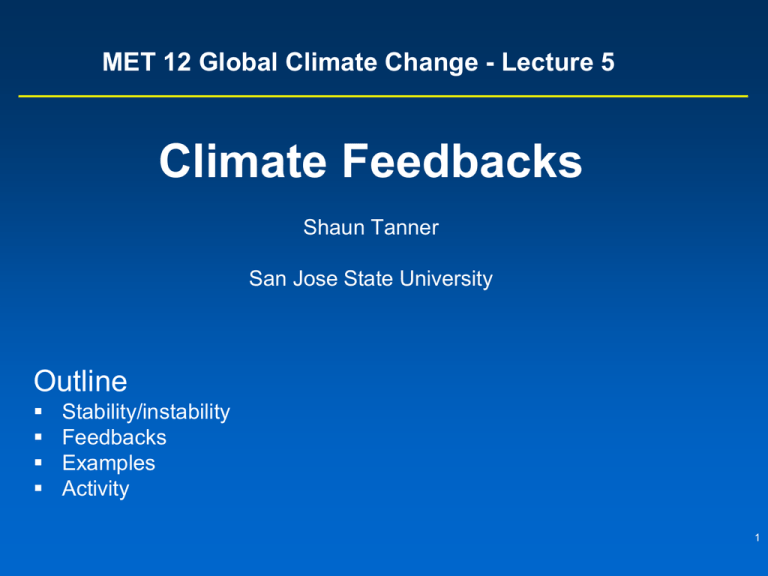
MET 12 Global Climate Change - Lecture 5 Climate Feedbacks Shaun Tanner San Jose State University Outline Stability/instability Feedbacks Examples Activity 1 2 Earth’s Climate The Earth’s climate is fairly stable in terms of temperature This can be visualized using in the following system diagram. The idea is that even though the system may change away from it’s initial point, it will have the tendency to go back to ‘normal’ eventually. 2 3 1 Stable Stable 3 Stability versus instability Stable: – Given a perturbation, the system tends to return to original state Instability: – Given a perturbation, the system moves to another state. Stable equilibrium Unstable equilibrium 5 States of equilibrium – The system may have multiple states of equilibrium 2 3 1 Stable to small perturbations, until a big force perturbs the system into a new equilibrium 6 Climate Stability The Earth’s climate changes as a result of internal/external forcing: – Changes in solar radiation – Changes in the earth’s orbit – Plate tectonics – Volcanoes – Human pollution etc. These forcings can be thought of as a perturbation (or push) to climate stability. These changes can be enhanced or diminished by positive or negative feedbacks 7 Climate Feedbacks Positive feedback: – initial change reinforced by another process. Negative feedback: – initial change counteracted by another process. 9 Positive Feedbacks Processes that accelerate a change – Note: Feedbacks cannot initiate change; they can only alter the pace of change Important climate examples: – Ice-albedo feedback – Water-vapor feedback – Cloud feedback 10 Ice-Albedo Feedback (Cooling) Initiating Mechanism Earth Cools Ice Coverage Increases Albedo Increases Positive Feedback Somehow this happens Absorption of Sunlight Decreases 12 Fill in the blanks 1. 2. 3. 4. increases, decreases, decreases Decreases, decreases, increases Increases, increases, increases Decreases, decreases, decreases Initiating Mechanism Earth Warms Ice Coverage ___________ Albedo _____________ Absorption of Sunlight _______ 13 Ice-Albedo Feedback (Warming) Initiating Mechanism Ice Coverage Decreases Albedo Decreases Positive Feedback Earth Warms Absorption of Sunlight Increases 15 Fill in the blanks 1. 2. 3. 4. Increases, increases, increases Increases, decreases, decreases Decreases, increases, increases Decreases, decreases, decreases Initiating M echanism E arth W arm s E vaporation A tm ospheric W ater V apor C ontent G reenhouse E ffect 17 Water Vapor Feedback (Warming) Initiating Mechanism Evaporation Increases Atmospheric Water Vapor Content Increases Positive Feedback Earth Warms Greenhouse Effect Strengthens 18 Water Vapor Feedback (Cooling) Initiating Mechanism Evaporation Decreases Atmospheric Water Vapor Content Decreases Positive Feedback Earth Cools Greenhouse Effect Weakens 20 Negative Feedbacks Processes that reduces an imposed change Important examples: – Cloud feedback – Chemical weathering Note: Positive/negative feedbacks have no relation to ‘good versus bad’, but are about how a system responds to a change. 21 Figure 12.7 Role of cloud in both warming and cooling the atmosphere. Possible Role of Cloud in Warming or Cooling the Atmosphere 22 Which feedback is positive? 1. Left 2. Right 23 As a result of the earth’s warming over the last 100 years, plants have been growing at a faster rate. Because plants absorb CO2, the increase in plant growth means that more CO2 is being absorbed from the atmosphere by plants. 1. This is a positive feedback. 2. This is a negative feedback. 3. This has nothing to do with feedbacks. 25 Activity Imagine the Earth was to warm for some reason (initiating mechanism or perturbation) 1. Identify two positive feedbacks that would influence the earth’s climate and explain how each one works. 2. Identify two negative feedbacks that would influence the earth’s climate and explain how each one works. 3. Which feedback do you think is more uncertain. Explain your reasoning. 26

